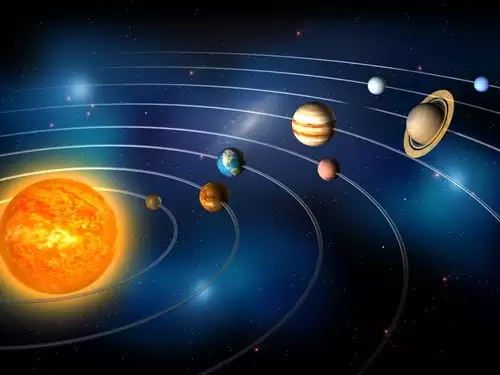Many astronomers spent a lifetime in research and effort to prove the Copernican heliocentric positioning system. Kepler improved on the Copernican model, which established the planets move in circular orbits around the Sun with his discovery that planetary orbits are ellipses, rather than true circles. This discovery corrected age old inaccuracies in predicting planetary positions.
Since the planets travel on their own elliptical orbits around the, Sun, from time to time it happens that they are much farther away than at other times.
For example, Venus can be as close as twenty-five million miles away, but when she is at the farthest point of her orbit, she can be a hundred and sixty-five million miles away.
The following terms, referring to the least and greatest distances, are generally used by astrologers:
- Perihelion: refers to any planet, or the earth, at its closest distance from the Sun.
- Aphelion: refers to any planet, or the earth, at its greatest distance from the Sun.
- Perigee: refers to the Moon at its closest distance to the earth.
- Apogee: refers to the Moon at its farthest distance to the earth.
It is not necessary to memorize the rate at which the planets travel around the Sun, but it is sometimes helpful to the astrologer to realize the approximate rates at which they travel for chart analysis purposes.

The time for each planet to completely orbit the Sun varies due to their orbital patterns. Following is list of the time frames required to complete one orbit:
- Mercury takes 83 days to travel around the Sun
- Venus takes 83 days to travel around the Sun
- Earth takes 365 1/4 days to travel around the Sun
- Mars takes 1 year and 322 days to travel around the Sun
- Jupiter takes 12 years to travel around the Sun
- Saturn takes 29 years to travel around the Sun
- Uranus takes 84 years to travel around the Sun
- Neptune takes 165 years to travel around the Sun
- Pluto takes 248 years to travel around the Sun
Sometimes when viewed from earth, the planets may appear to be moving backwards at times. This is often the case when viewing an outer, slow-moving planet such as Saturn as it is overtaken by the earth.
This is referred to as the planet being in retrograde motion. When the planets are in retrograde motion, in other words, appearing to move backward, the astrological position is marked with an R.
Following the motion of the planets aid the astrologer in chart erection and when analyzing horoscope matters.
